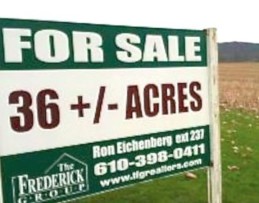The controversial Allen Organ rezoning is on the agenda for this Thursday’s Board of Commissioners meeting. The ordinance was advertised in January and will likely be voted on at the meeting.
Currently the 36 acre parcel is zoned commercial but has multiple unique constraints that make it difficult to develop without a special new zoning district. These include floodplain, location adjacent to a railroad and a dog-leg shape. To make the project economically feasible the developer has proposed a zoning ordinance that will allow up to 200+ apartments along with a 75,000 square foot supermarket with gas pumps.
Given past statements by current commissioners including board president Ron Eichenberg (who also happens to be the Realtor of the project) the ordinance is likely to be passed. I continue to have major concerns with the traffic impact on Rt. 100 and Willow Lane. I do not believe we should be considering zoning change requests to expedite development in the western corridor of the township. We should instead concentrate on infilling the appropriate corridors such as areas surrounding Hamilton Boulevard and the By-pass. These areas can handle the traffic impacts of largescale development without the need for costly improvements and avoiding negative impact on the residential portions of our township.
What I would have advocated for differently:
The Allen Organ parcel may have been a perfect candidate for such a program. We could have allowed this development to occur but only in exchange for preservation elsewhere. These programs are in place throughout the state. Everyone wins. The developer seeking more intense uses has options to acquire them, landowners who should be fairly compensated for their development rights are, and the community at large seeking to protect our quality of life has a mechanism to ensure it.
The key ingredients for a successful TDR program are all here; a strong real estate market; community consensus for conservation, and a community willingness to accommodate smart growth. All we need are leaders willing to explore these alternative options.

